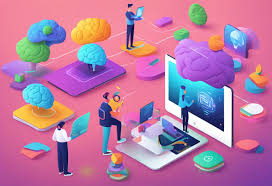Progressive teachers across educational settings are increasingly recognizing the substantial instructional value of well-designed kids animated shows when thoughtfully integrated into comprehensive learning experiences. This strategic incorporation represents more than convenience or entertainment—it reflects a sophisticated understanding of how narrative-based visual learning can support educational objectives across multiple developmental domains and subject areas.
Research from educational psychology demonstrates why animated content proves particularly effective for young learners. Children process and retain information most effectively when it connects to existing knowledge frameworks through emotionally engaging experiences. Quality animated programming provides precisely these conditions, creating multiple pathways for information processing that enhance both comprehension and long-term retention compared to traditional instruction methods alone.
The multimodal presentation inherent in animated shows offers significant advantages for diverse learners. By simultaneously engaging visual, auditory, and narrative processing centers in the brain, these programs provide multiple entry points that accommodate various cognitive strengths and learning preferences. This accessibility proves particularly valuable for inclusive classrooms serving students with diverse learning needs, attention patterns, and information processing styles.
Character identification represents a powerful mechanism through which animated content enhances learning. When students connect emotionally with characters who demonstrate curiosity, perseverance, and critical thinking, they often internalize these traits and apply them to their own learning challenges. Teachers can leverage these connections by referencing character behaviors during classroom activities, creating continuity between screen-based models and real-world applications.
Subject integration represents another significant advantage of educational animation. Programs like “Wild Kratts” seamlessly blend biological concepts with adventure narratives, while shows such as “Word Girl” embed vocabulary development within superhero storytelling frameworks. This integration helps students recognize connections between traditionally separated subject areas, supporting a more holistic understanding of how knowledge functions in authentic contexts.
Literacy skills develop naturally through exposure to well-crafted animated content. Research demonstrates that children acquire new vocabulary more effectively when words appear within meaningful contexts rather than isolated definitions. Quality animated shows provide these rich contextual environments, introducing sophisticated terminology within comprehensible narrative frameworks that support both understanding and retention.
Mathematical thinking finds natural expression through animation as well. Programs featuring problem-solving scenarios, spatial reasoning challenges, and pattern recognition activities help children visualize abstract concepts that might otherwise remain inaccessible. The narrative framing of these mathematical situations helps learners recognize practical applications rather than perceiving math as disconnected computational exercises without real-world relevance.
Scientific inquiry skills develop effectively through animation-based learning. Shows demonstrating the scientific method, experimental design, and cause-effect relationships model processes that children can subsequently apply to their own investigations. The visualization of otherwise invisible phenomena—from molecular interactions to geological processes—creates concrete mental models that support conceptual understanding beyond what verbal explanations alone could achieve.
Social-emotional learning represents a particularly valuable aspect of quality animated programming. Characters navigating interpersonal challenges, managing complex emotions, and demonstrating empathy provide powerful teaching moments for developing relationship skills. Teachers can reference these scenarios during classroom discussions, creating connections between fictional situations and actual student experiences in emotionally safe, accessible ways.
Cultural competence expands through exposure to animated shows featuring diverse characters, settings, and traditions. This representation helps all students see themselves reflected in educational materials while broadening perspectives about human experiences beyond immediate communities. Teachers can leverage these opportunities to foster appreciation for differences while recognizing shared experiences across various cultural contexts.
Implementation approaches vary based on grade level, subject area, and specific learning objectives. Effective strategies typically involve pre-viewing activities that establish purpose, guided viewing with strategic pauses for discussion, and post-viewing extensions that apply concepts to new contexts. This structured approach transforms passive consumption into active learning experiences with measurable educational outcomes.
Assessment considerations influence how teachers evaluate learning from animated content. Rather than testing recall of show details, meaningful assessment focuses on concept application, critical analysis, and creative extension of presented information. Performance tasks, discussion contributions, and project-based assessments provide more authentic measures of learning than traditional written evaluations focusing solely on content retention.
Professional development increasingly addresses media literacy competencies for educators. Teacher preparation programs and continuing education courses now frequently include modules on evaluating animated content, designing complementary activities, and assessing learning outcomes. These training resources help teachers develop sophisticated approaches to media integration rather than relying on convenience-based selection or personal preferences.
Research validation continues accumulating for animation-based learning approaches. A comprehensive study published in the Journal of Educational Technology found that students exposed to curriculum-aligned animated content demonstrated statistically significant improvements in concept retention, application abilities, and motivation compared to control groups receiving only traditional instruction across diverse subject areas and developmental stages.

